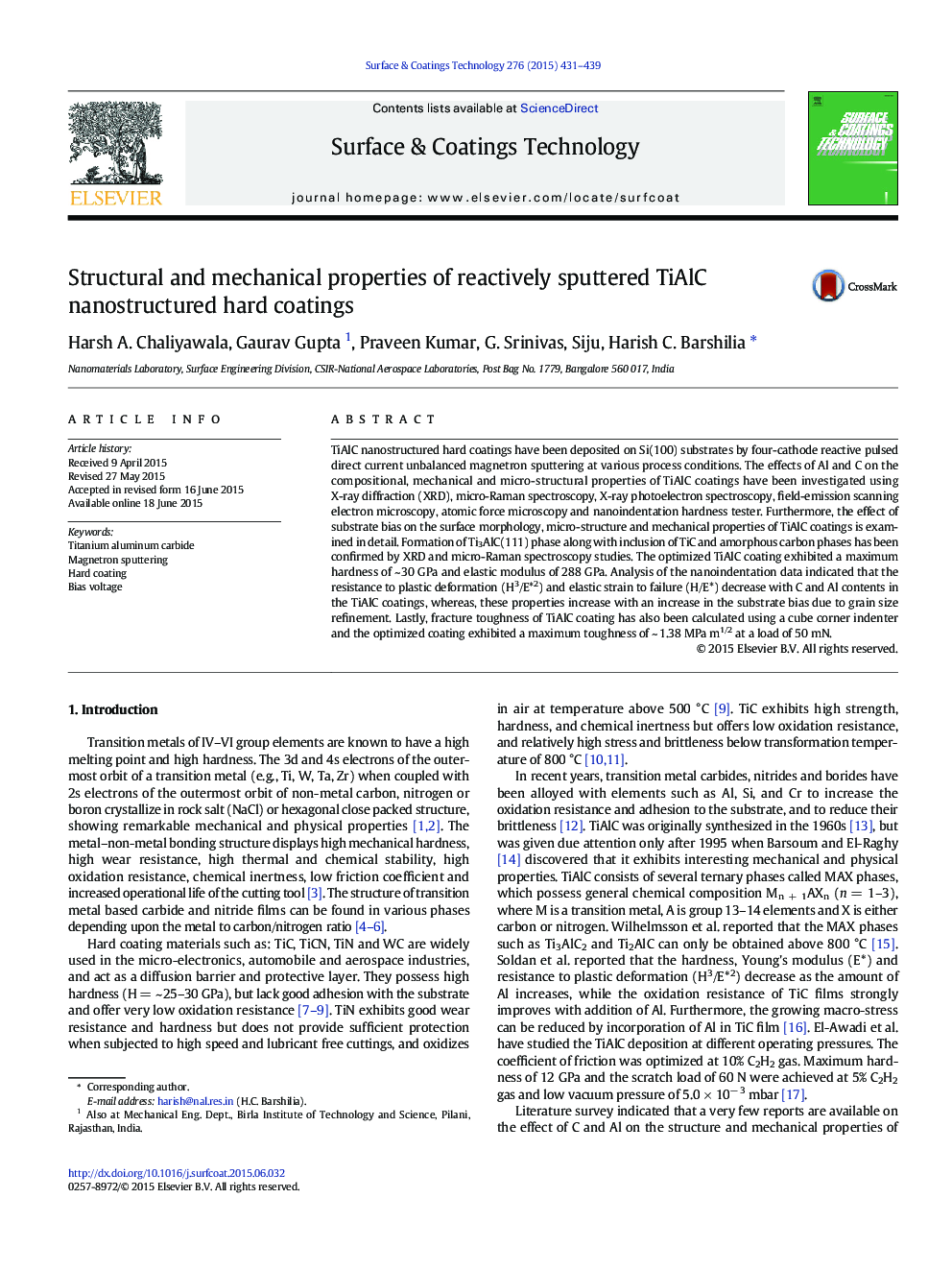| Article ID | Journal | Published Year | Pages | File Type |
|---|---|---|---|---|
| 1657002 | Surface and Coatings Technology | 2015 | 9 Pages |
•TiAlC hard coatings were deposited by reactive pulsed DC magnetron sputtering.•Hardness value of ~ 30 GPa and Young's modulus of ~ 288 GPa were achieved.•XRD patterns show fcc Ti3AlC(111) reflections for C and Al variations.•The increase in bias voltage improves H/E* and H3/E*2 values.•The micro-structure and surface morphology strongly depend on the bias voltage.
TiAlC nanostructured hard coatings have been deposited on Si(100) substrates by four-cathode reactive pulsed direct current unbalanced magnetron sputtering at various process conditions. The effects of Al and C on the compositional, mechanical and micro-structural properties of TiAlC coatings have been investigated using X-ray diffraction (XRD), micro-Raman spectroscopy, X-ray photoelectron spectroscopy, field-emission scanning electron microscopy, atomic force microscopy and nanoindentation hardness tester. Furthermore, the effect of substrate bias on the surface morphology, micro-structure and mechanical properties of TiAlC coatings is examined in detail. Formation of Ti3AlC(111) phase along with inclusion of TiC and amorphous carbon phases has been confirmed by XRD and micro-Raman spectroscopy studies. The optimized TiAlC coating exhibited a maximum hardness of ~ 30 GPa and elastic modulus of 288 GPa. Analysis of the nanoindentation data indicated that the resistance to plastic deformation (H3/E*2) and elastic strain to failure (H/E*) decrease with C and Al contents in the TiAlC coatings, whereas, these properties increase with an increase in the substrate bias due to grain size refinement. Lastly, fracture toughness of TiAlC coating has also been calculated using a cube corner indenter and the optimized coating exhibited a maximum toughness of ~ 1.38 MPa m1/2 at a load of 50 mN.
